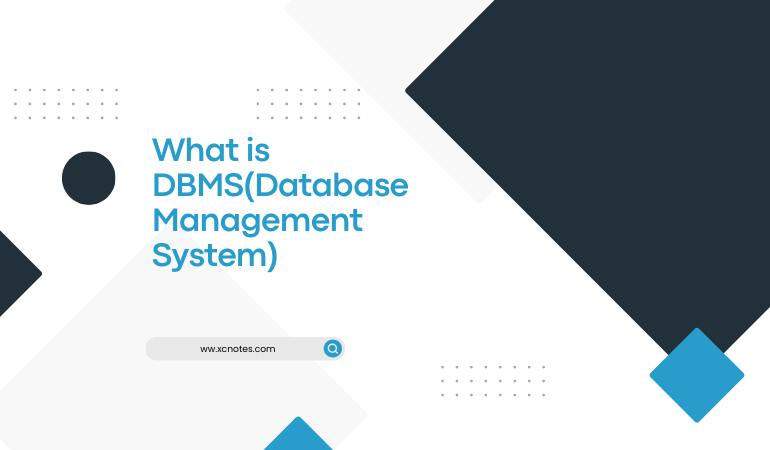What is DBMS(Database Management System)?
DBMS stands for Database Management System. It is a software system that allows users to manage, organize, and manipulate data in a database. It is a software application that enables users to efficiently store, manage, and retrieve data in a structured manner. A DBMS serves as an intermediary between users and the database, providing a convenient and controlled way to interact with the stored data.
A DBMS provides an interface for interacting with the database, allowing users to perform various operations such as storing, retrieving, updating, and deleting data. It provides a way to define the structure of the database, specify relationships between different data elements, enforce data integrity constraints, and ensure data security.
Some key features of a DBMS include:
Data Definition: It allows users to define the structure of the database, including creating tables, specifying attributes (columns), and defining relationships between tables. It allows users to define the structure and organization of the data in the database, such as tables, relationships, and constraints.
Data Manipulation: It provides methods for inserting, updating, and deleting data in the database. Users can query the database to retrieve specific information based on their requirements. Users can perform various operations on the data, such as inserting, updating, and deleting records.
Data Security: DBMS systems offer mechanisms to control access to the database and ensure data security. DBMSs provide mechanisms to control access to the database, protecting it from unauthorized users and ensuring data privacy. DBMSs incorporate security measures to protect the data from unauthorized access, ensuring confidentiality, integrity, and availability. This includes user authentication, access controls, encryption, and backup and recovery mechanisms.
Data Integrity: DBMS systems enforce integrity constraints to maintain the consistency and accuracy of data. These constraints can include rules for data validation, referential integrity, and uniqueness of data. DBMSs enforce data integrity by ensuring that data is accurate, consistent, and valid. They enforce constraints, such as unique keys, referential integrity, and data types.
Data Concurrency: DBMS systems handle multiple user requests simultaneously, ensuring that data remains consistent and avoiding conflicts when multiple users try to access or modify the same data simultaneously. DBMSs manage concurrent access to the database, ensuring that multiple users can access and modify data simultaneously without conflicts.
Backup and Recovery: DBMS systems provide mechanisms for data backup and recovery, allowing users to restore the database to a previous state in case of data loss or system failure. DBMSs provide features for creating backups of the database and recovering data in case of system failures or data corruption.
Popular examples of DBMS
include Oracle Database, MySQL, Microsoft SQL Server, PostgreSQL, and MongoDB. Each DBMS has its own set of features, data models, and query languages, but they all serve the purpose of efficiently managing and organizing large amounts of data.
Overall, DBMSs play a crucial role in handling the complexities of storing, managing, and manipulating large amounts of data efficiently and securely. They are widely used in various applications, ranging from small-scale personal projects to enterprise-level systems.

